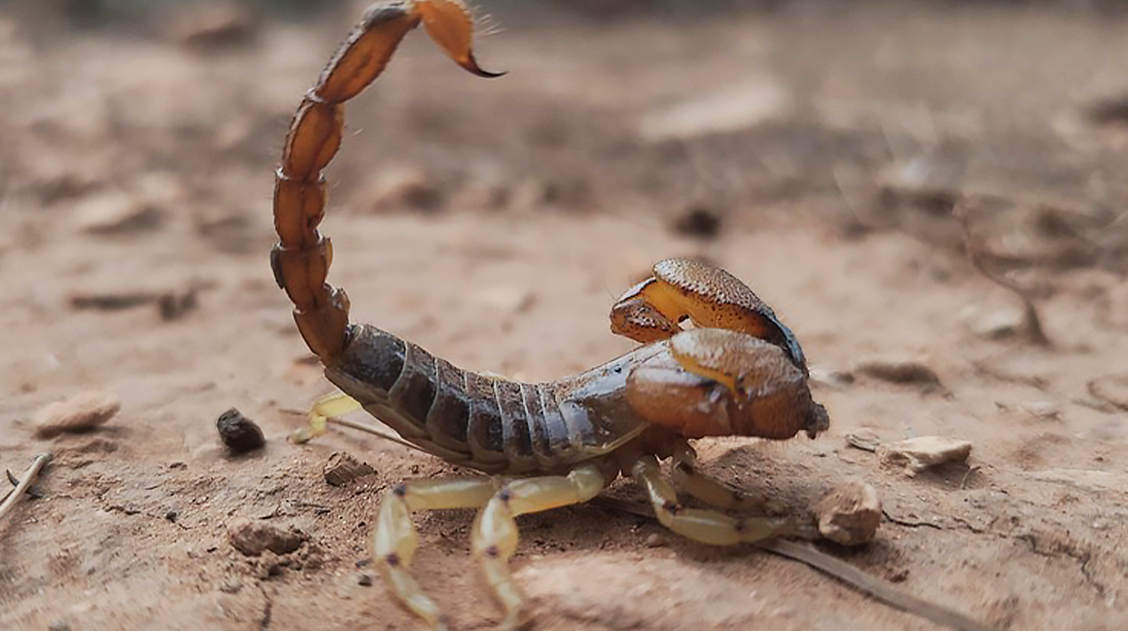
Does Size Matter? The Science of Scorpion Stings
When it comes to scorpions, the bigger the better. – Indiana Jones
Although this may be seen as a throwaway line from Indiana Jones and the Kingdom of the Crystal Skull, it constitutes the hypothesis of recently published research on scorpions in an MDPI journal.The study, published in Toxins, shows that, scorpion size does matter when considering how venomous a species is. As a general rule, larger scorpions tend to have less potent venoms compared to smaller specimens.
Dr. Kevin Healy and his fellow researchers from NUI Galway, Ireland, put this statement to the test by comparing the physical and toxicological features of 36 scorpion species from across the globe. “When we look at the most potent, and dangerous, scorpion venoms we find they tend to be associated with species such as the Deathstalker which are relatively small. In contrast, the biggest species such as Rock Scorpions have venoms that are likely to only cause slight pain” says Healy.

It’s Not Just Scorpion Size, but Pincer Size Also Matters
The size of a scorpion’s pincers is also closely related to the potency of their venom. Species such as the South African Thick-Tailed Scorpion, which has small pincers, have venom that is more than 10 times more potent than, say, the Israeli Gold Scorpion, a species with large and robust pincers.
But why is this the case? “Outside of movie trivia, there are good evolutionary reasons to expect the results,” mentions Healy. With scorpions using both their venomous sting and pincers to capture prey and in self-defence, there is a trade-off between their weapons during evolution. In theory, because more energy is used for bigger pincers, there is less energy available to stock its chemical arsenal. This means that larger scorpions that can rely on overpowering prey and predators using their physical size are less reliant on venoms, whereas smaller, more physically vulnerable scorpions have developed more potent and deadly venoms to fend off attackers.
“Not only did we find that bigger is better—when it comes to people being stung—we also found that bigger pincers are better when it comes to assessing the danger level of a scorpion. While species such as the large-clawed scorpion might be small to medium in size, they mainly rely on their large pincers instead of their relatively weak venom.” States Allanah Forde, the lead author of the study and a postgraduate student at NUI Galway.

Why it is Important to Understand Scorpion Venom Potency
Although the inspiration may have come from Hollywood, scorpionism (or scorpion stings to us non-arachnologists) is a global health issue, with over one million cases globally each year. Prior to this research, the general consensus among doctors was that, when dealing with stings, “bigger is better”. This was often used to help with treatment. With this information now confirmed, identifying the species of the scorpion that inflicted the sting should be promoted as lifesaving public knowledge, allowing medical professionals to react faster when individuals with scorpion stings are admitted to hospital. “As scientists, our job is also to put popular wisdom to the test.
Most victims hospitalised with severe symptoms following scorpion stings are children below the age of 15. Identifying the species responsible is essential to administer the correct treatment, and a simple rule such as ‘bigger is better’ is a first small step toward saving lives” says Dr. Michel Dugo, head of the Venom System Lab at NUI Galway, and a co-author of the study.
So, here’s some advice if you ever find yourself hunting for lost artifacts in the middle of the jungle and come across a scorpion. If it’s small, run like the wind, because it’s probably got a nasty sting. You can read the full article here.
Image Credits: “Deathstalker” by Alastair Rae is marked with CC BY-SA 2.0. “Flat-Rock Scorpion” by Jim, the Photographer licenced by CC.










